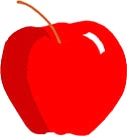 Face it: Halloween just isn't what it used to be. This ancient relic of pre-Christian Europe used to involve wandering souls, fortunetelling, bonfires, and groups of people going from house to house asking for food. Oh. Well, maybe things haven't changed as much as we think. One new aspect, though, is Halloween's growing popularity. It's the sixth largest spending holiday in the US, with over 70% of adults planning parties, costumes, or decorations.
Face it: Halloween just isn't what it used to be. This ancient relic of pre-Christian Europe used to involve wandering souls, fortunetelling, bonfires, and groups of people going from house to house asking for food. Oh. Well, maybe things haven't changed as much as we think. One new aspect, though, is Halloween's growing popularity. It's the sixth largest spending holiday in the US, with over 70% of adults planning parties, costumes, or decorations.
As Americans eagerly head to the stores for costumes and candy corn, few realize the origins of the holiday's symbols, customs, and traditional foods. For instance, the jack o'lantern, a carved, illuminated pumpkin, is arguably the most common symbol. But how many people realize that the ubiquitous orange gourd was originally a turnip?
 Celebrations: From Samhain to Halloween
Celebrations: From Samhain to Halloween
The modern Halloween holiday originated over 2,000 years ago as the Celtic New Year holiday of Samhain (pronounced sow-en where "sow" rhymes with "cow") celebrated on November 1. Samhain is a Celtic word meaning "Summer's end." The day before Samhain, October 31, was believed to be a time when it was easy for the dead to cross the boundary separating them from the living.
After the Roman armies invaded Britain and Northern Europe, the Romans incorporated two of their holidays into the Samhain festival. Feralia was celebrated in late October to honor the souls of the dead, while the harvest festival of Pomona (goddess of the orchards) was celebrated on November 1st.
Christianity added a new twist to the celebrations. In 835 CE, Pope Gregory moved All Saints Day, a day to remember saints and martyrs, from May 13th to November 1st. In 1000 CE, the Church designated November 2nd as All Souls Day, to honor the good Christians who died – but weren't saints or martyrs. Historians speculate that these celebrations were part of an effort to remove the more supernatural aspects of the Celtic and Roman celebrations. Pagan holidays that revolved around fortunetelling, wandering souls, and mischief-making fairies were transformed into Christian religious observances.
The modern term Halloween comes from the Middle English term for All Saints Day: All-Hallowmas. The day before – October 31 – was called All-Hallow's Eve, eventually shortened to the more familiar Halloween.
In modern times, the most common aspects of the holiday are the customs of wearing costumes and "Trick or Treating." The Celts disguised themselves on Samhain in an effort to confuse the dead. They thought the souls would mistake them for other wandering souls and leave them be.
Trick or Treating began in England as part of the All Soul's Day parade. At this time, the poor would go door to door begging for food from their neighbors who would distribute little pastries called "soul cakes." As part of the trade, the beggars were asked to pray for the souls of the givers' relatives, and the practice soon became known as "going a-souling." The tradition continued in the United States as "trick or treating," with virtually all references to prayer being forgotten.
Fun With Turnips
As the holiday evolved from a festival based on the remembrance of dead relatives into an often-raucous evening of partying, one constant has remained: food. And everyone knows that you can't have a celebration without food!
Here's the how and why of some traditional Halloween foods:
 Pumpkins - The jack o'lantern tradition originated with an Irish folk tale. One day, Jack talked the Devil into climbing a tree, and then trapped him there by placing crosses all around the tree. Jack got the Devil to agree not to take his (Jack's) soul to Hell when he died. And the Devil kept his word: when Jack died, he didn't go to Hell. But the flaw in the plan was that Jack wasn't allowed into Heaven either! During his life, Jack had been mean, stingy, and prone to playing malicious tricks on everyone. Worried about wandering forever in darkness, Jack did manage to talk the Devil into giving him an ember from the fires of Hell. He placed the ember in a hollowed-out turnip and used it as a lamp to light his way around the countryside.
Pumpkins - The jack o'lantern tradition originated with an Irish folk tale. One day, Jack talked the Devil into climbing a tree, and then trapped him there by placing crosses all around the tree. Jack got the Devil to agree not to take his (Jack's) soul to Hell when he died. And the Devil kept his word: when Jack died, he didn't go to Hell. But the flaw in the plan was that Jack wasn't allowed into Heaven either! During his life, Jack had been mean, stingy, and prone to playing malicious tricks on everyone. Worried about wandering forever in darkness, Jack did manage to talk the Devil into giving him an ember from the fires of Hell. He placed the ember in a hollowed-out turnip and used it as a lamp to light his way around the countryside.
The Irish hollowed out turnips, beets, gourds, and other vegetables to make jack o'lanterns that would protect them from Jack's evil spirit. Immigrants to America quickly switched to pumpkins because they're more plentiful - not to mention far easier to hollow out and carve.
 Apples are used in many different ways, but their significance probably goes back to the Roman festival honoring Pomona, goddess of the orchards. The Celts used apples in Samhain divination rituals.
Apples are used in many different ways, but their significance probably goes back to the Roman festival honoring Pomona, goddess of the orchards. The Celts used apples in Samhain divination rituals.
Some of the rituals and games persist now. In the bobbing for apples game, the first person to catch an apple is supposed to be the next one to marry. When peeling an apple, many people still try to avoid breaking the peel. The length of the peel either indicates how long your life will be or, when dropped on the floor, will predict the first letter of your future spouse's name.
Even people not looking for romantic love still love apples at Halloween. Warm apple cider warms the cool nights, and candied apples do incalculable damage to dental work.
 Nuts – In Britain, people believed that the Devil was a nut gatherer, and that nuts had magical abilities. Many would wear necklaces made of nuts a protection from evil. Others believed that nuts had divination abilities. Young women would take two nuts, give each the name of a suitor, and then lay them on the fireplace grate to burn. If the nut burned steadily, that meant the suitor would stay true. If the nut popped, then the suitor would eventually be unfaithful.
Nuts – In Britain, people believed that the Devil was a nut gatherer, and that nuts had magical abilities. Many would wear necklaces made of nuts a protection from evil. Others believed that nuts had divination abilities. Young women would take two nuts, give each the name of a suitor, and then lay them on the fireplace grate to burn. If the nut burned steadily, that meant the suitor would stay true. If the nut popped, then the suitor would eventually be unfaithful.
Nuts today are more likely to be used in trail mixes and other party foods. But, given the divorce rate, maybe we all need to consider trying some of these ancient rituals before tying the knot.
Chocolate! There's no ancient religious significance to this practice – although many people claim to worship the substance in all its forms.
The American custom of trick or treating began in the 1920's and became widespread during the 1950's. Costumed children roam through their neighborhoods requesting small treats from adults – who generally oblige, hoping (like their ancestors) to keep the "spirits" out of their homes! And usually, the most coveted treat of all is – chocolate.
Spooky Recipes & Online Resources
When you're planning a Halloween menu, just about anything you serve could be called "traditional" because the holiday has evolved from so many cultures. Here are some terrific online resources that give ideas for decorating, celebrating, and cooking for the holiday.
Decorating for Halloween:
Pumpkin carving patterns: A large selection of free patterns from Jack O'Lantern.com
Cylon Jack O'Lantern pattern: For those Battlestar Galactica fans among us.
Homemade Halloween decorations: Money saving ideas from MommySavers.com.
Halloween Recipes and Menu Ideas:
Halloween-themed cocktails: If the noise and kid activity doesn't turn you into a zombie, these cocktail recipes just might!
Halloween Foods - Traditions & Party Menus: Historic American Halloween menus from 1901 – 1963.
Diabetic-friendly Halloween recipes: This is a hard time of year for anyone on a special diet, but diabetics are often especially left out of the sweet fun. These recipes include a sugar-free Mexican Chocolate Mousse – yum!
Adult Halloween party recipes: Party ideas for adults from the very grown-up Betty Crocker.
Kid-friendly Halloween recipes: Who could pass up such delicacies as "Baked Monster Eyes" and "Bat Wings with Swamp Dip?" Certainly not many kids – or adults – that we know.
Celebrating Halloween:
Halloween Crafts & Activities for Kids
Costume patterns for kids and adults: Large collection of links to many different costume ideas.
Fair trade chocolate: Chocolate coins from the Global Exchange are part of the Fair Trade Action kits that help you give more than candy. Give knowledge about the importance of fair trade.
Trick or Treat for UNICEF kits: The original "kids helping kids" campaign. Make kids happy in your neighborhood and around the world by trick or treating for UNICEF.
The quintessential component of American culture is its willingness – even eagerness – to absorb customs and celebrations from many cultures. Few holidays demonstrate this better than Halloween, which is steadily growing in popularity. From modern American customs, to the Day of the Dead celebrations in Mexico, more people each year find a way to celebrate.
Get ready to enjoy some ghoulish fun this Halloween. You'll have a lot of company!



